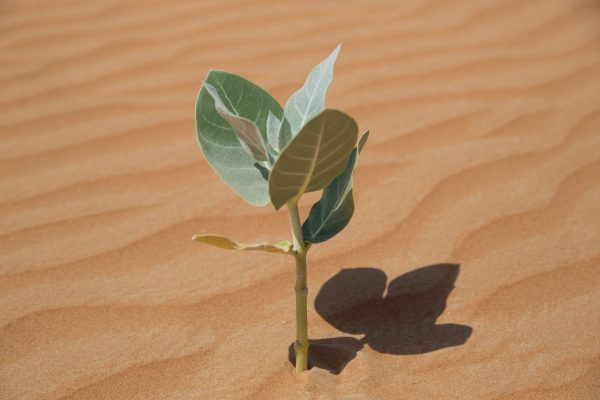Transforming the UAE into the Ecotourism Destination of Choice
Feature, Tourism

July 4, 2018, 1:20 pm
The UAE government has taken measures to preserve the country’s rich biodiversity and develop the infrastructure needed to provide visitors with a fulfilling experience in a natural setting.
Emerging in the late 1980s, ecotourism is a form of specialty travel defined by The International Ecotourism Society (TIES) as “responsible travel to natural areas which conserves the environment and sustains the well-being of local people”. Ecotourism and all other nature-related forms of tourism account for approximately 20 percent of total international travel and generate seven percent of all international travel expenditure.
Over the last 40 years, the UAE has focused on transforming itself into the region’s leading entertainment, leisure and business destination. The launch of airlines as well as the construction of modern air and ground transport infrastructure, major attractions and shopping malls have helped achieve this priority.
Never one to rest on past laurels, the UAE is today adopting a new approach through positioning itself as an ecotourism hub. Although it is early days yet with these efforts, the country’s stunning natural attractions and spectacular landscapes are already luring nature lovers from all over the world.
The country’s stunning natural attractions and spectacular landscapes are luring nature lovers from all over the world.
To establish the UAE as the ecotourism destination of choice, the government has taken measures to preserve the country’s rich biodiversity and develop the infrastructure needed to provide visitors with an enduring and enriching experience in a natural setting.
Successful ecotourism relies on proper infrastructure and leisure amenities. Apart from easy access to protected areas and scenic landscapes, and availability of accommodation nearby, the UAE offers some of the region’s most exquisite nature-based recreational activities including wildlife observation trips, bird watching, stargazing, wetland exploration and visits to local communities to learn more about their culture. In addition to the fun factor, these activities bring tourists closer to nature and help them acquire a deeper understanding of natural life. Sports aficionados can choose from a wide range of physical pursuits, such as rafting, wilderness hiking, skydiving, sea kayaking, mountain climbing and diving.
Each of the seven emirates has its unique nature-based experience. Visitors to the capital, Abu Dhabi, can discover the wonderful wildlife in the waters of the Mangrove National Park – a biodiversity hotspot that includes mangrove forests, salt marshes, mudflats and algal communities, marvel at the amazing rock formations at Jebel Dhanna, and get up close and personal with a flamboyance of flamingos at Al Wathba Wetland Reserve. Al Ain, located in the emirate of Abu Dhabi, is known as the Garden City due to its lush greenery and has several protected areas. The Al Ain Oasis – the UAE’s first UNESCO World Heritage Site – spans over 1,200 hectares filled with more than 147,000 date palms of almost 100 varieties.
Each of the seven emirates has its own unique nature-based experience.
As for Dubai, tourists can take a break from the stunning skyline and man-made retail marvels to admire its natural wonders that are equally, if not more resplendent. There are vast swathes of green spaces with picturesque lakes and greenery right in the heart of the emirate. The Dubai Desert Conservation Reserve offers sweeping views of desert dunes and the chance to spot a herd of over 400 endangered Arabian oryx. Eco-tourists will also enjoy exploring the dramatic terrain as the Bedouin once did – on camel-back.
Meanwhile, Al Marmoom, spanning over 10 percent of the emirate’s total area, provides a sanctuary for 19 endangered animal species and hosts the country’s highest concentration of large flamingos in a desert region with almost 500 birds. It also has one of the most sizeable houbara bustard colonies in the region, and its Arabian gazelle herd is among the largest in the UAE.
While newcomers may find it surprising, bird watching is a popular activity in Dubai, especially around its many wetland areas that are home to over 400 species of birds. Key bird habitats include Ras Al Khor, favored by western reef herons, flamingos and spotted eagles, and the Jebel Ali area with its native hoopoe-lark and grey francolin.
Thrill-seekers and adrenaline junkies can get their dose of adventure on Ras Al Khaimah’s Jebel Jais – the highest mountain in the UAE that boasts the world’s longest zipline. At a length of 2.83 kilometers (the equivalent of more than 28 football pitches), the record-breaking zipline runs through the mountains 1,680 meters above sea level at speeds of 120 kph to 150 kph. Visitors to the peak can also admire breathtaking vistas along the Middle East’s first commercial via ferrata (Italian for ‘iron road’) – a protected climbing route with a steel cable set into the mountainside that climbers can secure themselves to.
Tourists who prefer a more relaxing experience will appreciate their visit to the town of Kalba in the emirate of Sharjah that is renowned for its tranquility and beautiful surroundings. Currently, the Kalba Eco-Tourism Project, the largest ecotourism venture in the UAE, is seeking to make the most of the region’s natural attractions while managing the impact of tourism on the environment. Also located in Sharjah, the Arabian Wildlife Center is the only zoo in the Arab world that offers the opportunity to see all the animals that are natural inhabitants of the Arabian Peninsula, including those that are now extinct, in the wild. This unique facility houses over 100 species in safe, spacious and natural surroundings.
Belying its diminutive size, Ajman has a surprisingly diverse landscape – from sandy beaches and desert dunes to mangrove forests and craggy mountains – with a rich marine and bird life. Nature lovers will delight in the emirate’s beautiful stretch of coastline and the sprawling mangrove forest of Al Zorah Nature Reserve to the north of the city. Al Zorah’s pink flamingos steal the show, but birdwatchers can also spot nearly 60 other species in the mangroves and lagoons.
Visitors travelling to the east of the UAE, along the Gulf of Oman, can enjoy a variety of water-based activities, such as surfing, yachting, swimming and deep sea fishing, on Fujairah’s beaches all year round. The emirate has some of the best snorkeling and scuba diving locations in the country.
Umm al-Quwain may not be as urbanized as the other emirates, but it is one of the best places to see how the UAE used to look before industrialization changed its topography. It has been built near a bright blue lagoon, surrounded by little islands that are a haven for bird watchers and nature enthusiasts. The emirate’s wetlands, especially the mangroves and the water channels between the islands, are ideally explored by boat or by kayak. Located on Al Sinniyah Island, the largest of the Umm al-Quwain islands, Khor Al Beidah is a highly popular spot for wildlife and bird watching. The marine reserve comprises 90 square kilometers of shallow lagoons and mud areas that provide an ideal feeding and nesting habitat for many bird species.
The country’s commitment to preserving the environment stems from the profound respect for nature, instilled in its people by the founding father of the UAE, late Sheikh Zayed bin Sultan Al Nahyan.
One of the most notable benefits of ecotourism for the local community is job creation, both through direct employment within the tourism industry, and indirectly in sectors such as retail and transportation. When indigenous people spend their wages on goods and services, it leads to what is known as the ’multiplier effect’, creating more jobs as well as growth opportunities for small-scale enterprises.
In addition, ecotourism promotes conservation of wildlife and natural resources, as these are now regarded as tourism assets. Featuring 43 protected areas that make up 14 percent of the country’s territory, the UAE has always been dedicated to the preservation of natural habitats including wetlands. These areas provide a safe environment for wildlife, and have enabled the breeding and reintroduction of certain endangered species. For example, the greater flamingo is now flourishing in Al Wathba Wetland Reserve, while the Arabian oryx, once extinct in the wild, has been successfully reintroduced in the Um Al Zumoul Protected Area.
Photo Credit – www.smithsonianmag.com










